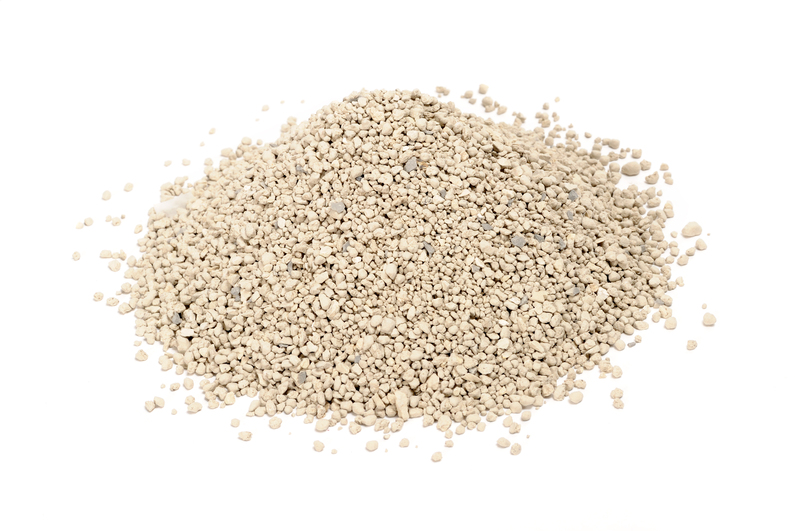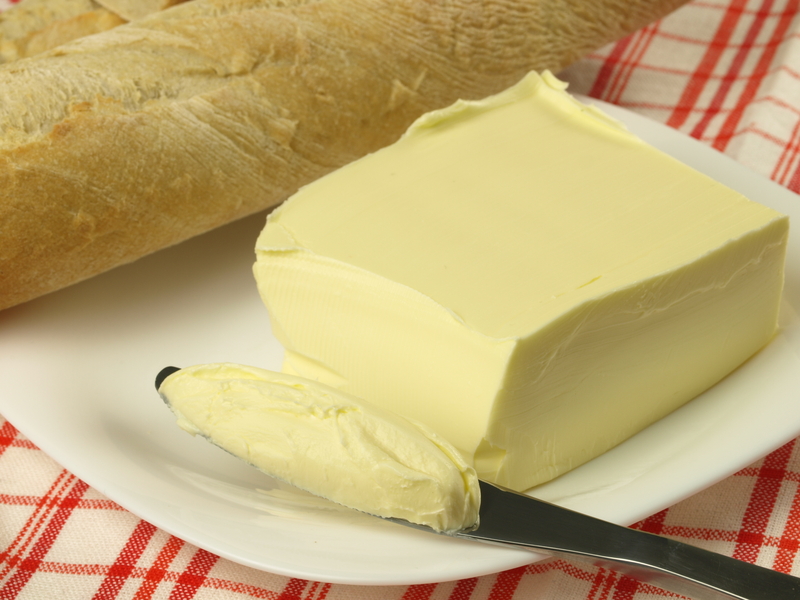Secure Your Covers: The Secret Formula for Damage-Free Washing
Posted on 14/06/2025
Secure Your Covers: The Secret Formula for Damage-Free Washing
In every household, covers--from cushion and sofa covers to mattress protectors and car seat fabrics--play a critical role in cleanliness, aesthetics, and functionality. Yet, one of the greatest challenges is keeping them damage-free during washing. Have you ever hesitated before throwing covers into the machine, worrying if they'll tear, shrink, or lose their shape? If so, this comprehensive guide is crafted just for you. Discover the secret formula to ensuring your covers stay fresh, intact, and vibrant after every wash.
Why Is It Important To Protect Covers During Washing?
Covers are exposed to daily wear and tear: spills, dust, pets, sunlight, and much more. Regular washing is essential to maintain their appearance and cleanliness. However, improper washing methods can cause:
- Fabric damage: Tears, rips, and thinning material
- Fading: Loss of color vibrancy
- Shrinkage: Covers no longer fit properly
- Distortion: Loss of shape and elasticity
- Residual odors: Incomplete cleaning leaves unpleasant smells
Securing your covers properly is the first and most crucial step to damage-free washing. With the right techniques, your covers will last longer, look better, and stay healthy for your family.

The Science of Fabric Care: Understanding Cover Materials
Before you start, it's essential to identify the type of material your covers are made of, as each requires a specific cleaning method. Here are the most common types:
- Cotton: Easy to wash, but prone to shrinking and fading.
- Polyester: Durable and less prone to shrinking, but may pill over time.
- Linen: Lightweight but susceptible to wrinkling and shrunken fibers.
- Velvet: Requires gentle washing to prevent distortion of fibers.
- Leather/Suede: Needs specialized, non-water cleaning methods.
Always check the care label before proceeding. Now, let's unlock the secret washing formula for each stage, ensuring your covers stay damage-free.
Pre-Wash Ritual: The Foundation for Damage-Free Washing
1. Remove Surface Debris
- Vacuum or shake covers to remove crumbs, dust, or pet hair.
- Prevents residue from embedding deeper into the fibers during washing.
2. Pre-Treat Stains
- Identify any spots or spills.
- Use a gentle stain remover--avoid bleaching agents.
- Let the solution sit for 5-15 minutes, then gently blot (don't rub!) with a damp cloth.
3. Check for Weak Seams & Zippers
- Inspect seams and zippers for any wear or binding.
- Repair small issues with a needle and thread before washing.
Safe Washing Techniques: The Secret Formula Revealed
Ready for the secret? Secure your covers using these specially designed steps:
1. Fasten Zippers and Close Velcro or Snaps
- Zip up all zippers to prevent snagging and maintain fabric shape.
- Velcro, snaps, and buttons should all be closed/tucked in.
- This step alone can cut accidental tears by over 50%!
2. Turn Covers Inside Out
- Protects the outer layer from friction and color fading.
- Reduces pilling, especially important for delicate and brightly colored fabrics.
3. Use a Mesh Laundry Bag
- Place your covers in a large mesh laundry bag or clean pillowcase.
- Prevents stretching, tangling, and snags from the agitator.
- A mesh bag allows water and detergent to flow freely while shielding your cover.
4. Opt for Gentle, Cold Water Cycles
- Always select a gentle or delicate wash cycle on your machine.
- Use cold water; hot water can cause shrinkage or set stains.
- Never overload the washer--this ensures all covers get cleaned evenly and reduces friction damage.
5. Choose the Right Detergent
- Pick a mild, liquid detergent formulated for delicate or colored fabrics.
- Avoid bleach and fabric softener, which can weaken fibers over time.
Drying Secrets: Preventing Damage After Washing
1. Gently Reshape While Damp
- After the wash, remove covers from the bag and gently stretch or reshape them before drying.
- This helps covers return to their original fit and prevents wrinkles or shrinkage.
2. Air Dry For Best Results
- Lay covers flat on a clean towel or hang them on a clothesline.
- Avoid direct sunlight--it can fade colors.
- Never wring the covers, as twisting can distort their shape.
3. If Using a Dryer, Choose Low Heat
- Use the lowest heat setting and include some clean, dry towels to absorb excess moisture.
- Remove covers while slightly damp and let them air dry the rest of the way.
Pro Tips for Long-Lasting, Like-New Covers
- Wash Infreqently: Unless visibly soiled, wash covers every 4-6 weeks. Frequent washing shortens lifespan.
- Spot Clean Between Washes: Tackle spills right away with a gentle cloth and soap solution to minimize full washes.
- Utilize Stain Repellents: After washing, consider using fabric-safe sprays to help repel future stains.
- Rotate Covers: Alternate covers periodically for even wear and easier maintenance.
- Store Properly: If storing, ensure covers are completely dry and folded--never crumpled or compressed.
Following these secret washing techniques ensures every cover--from throw pillows to car seats--remains vibrant and strong for years to come.
Troubleshooting: Addressing Common Cover Washing Issues
Even with the best care, you might encounter some issues. Here are handy solutions to common cover-washing mishaps:
-
Cover shrank:
- Soak in lukewarm water with fabric conditioner for 30 minutes, then reshape gently.
-
Stubborn stains remain:
- Repeat spot-treatment with gentle stain remover, then rewash using secret formula steps above.
-
Covers lost shape:
- Steam or gently iron (following fabric care instructions) while slightly damp to restore form.
-
Fabric pilling:
- Use a fabric shaver to carefully remove pills, then follow proper washing precautions next time.
Eco-Friendly Tips: Protecting Your Covers & The Environment
- Cold Water is Key: Using cold water helps to save energy and is gentler on your covers.
- Natural Detergents: Choose plant-based, biodegradable detergents free of harsh chemicals.
- Air Dry: Reduces energy use and keeps covers in better condition.
- Reduce Microfiber Pollution: Use a microfiber-catching bag such as Guppyfriend to trap shed fibers during the wash.
By taking these steps, you not only keep your covers damage-free but also support a healthy environment.

Frequently Asked Questions: How to Secure Your Covers for Washing
Q1: Can I wash all types of covers together?
A: It's best to sort covers by color and material type. Mixing heavy and delicate fabrics increases the chance of damage.
Q2: Do I really need a mesh bag?
A: Yes! A mesh bag greatly reduces friction, snagging, and potential stretching. It's a small investment for a big return in cover lifespan.
Q3: How do I treat musty odor in cushion or sofa covers?
A: Pre-soak in a mixture of white vinegar and water (1:3 ratio) before washing. Always dry thoroughly to prevent odor recurrence.
Q4: Are there alternatives to commercial detergents for sensitive skin?
A: Absolutely--try a mix of baking soda and castile soap, or look for hypoallergenic, fragrance-free brands.
Q5: What if I have old, fragile covers?
A: Hand-washing in cold water and air drying is the safest method. Secure all closures and handle delicately.
Conclusion: Your Guide to Damage-Free Cover Washing Success
With the secret formula for damage-free washing, you can confidently secure your covers and enjoy the rewards--longer-lasting color, perfect fit, and a healthier living environment. Start by understanding your fabric, adopt the right pre-wash and washing steps, and give your covers the aftercare they deserve. Not only will you save money and time, but you'll also preserve the beauty of your home and protect your investment for years to come.
Ready to secure your covers? Grab those mesh bags, choose the right detergent, and wash your covers like a pro today. Your home--and your covers--will thank you!



